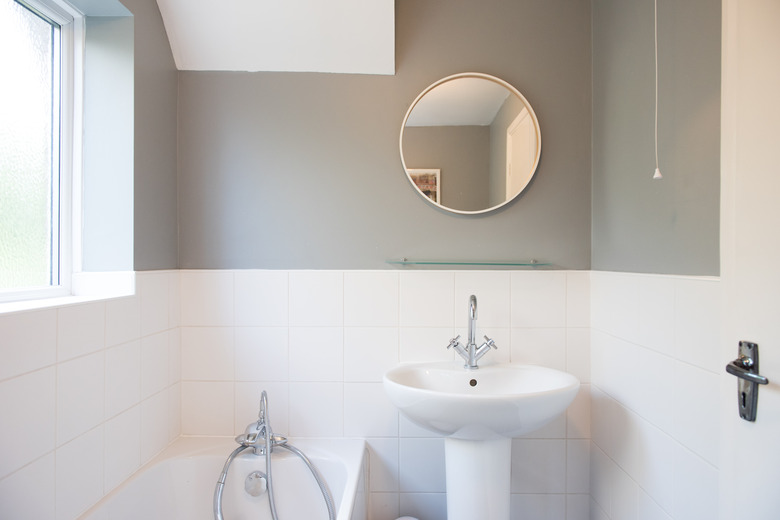Parts Of A Bathroom Sink
We may receive a commission on purchases made from links.
The bathroom sink is one of those fixtures you don't think about until something happens to it and it needs to be repaired or replaced. The sink is made of various components — some that you can see, like faucets, and some that you can't. Even the inner workings of the sink aren't terribly complicated, but if you're considering changing out the faucet for a different mode or even doing a complete bathroom renovation, it's good to know a bit about what you're dealing with.
Bathroom Sink Exterior
Bathroom Sink Exterior
Before you dive into your project, it's important that you know the pieces that are involved and how they relate to the performance of your sink.
The piece most readily noticed on any bathroom sink is the faucet. Faucets deliver the flow of water and include a type of control to regulate water temperature and pressure produced. Faucet controls can be in the form of levers, knobs and even push buttons, which are often seen in public restrooms. You can pick the type of controls that best fit your style and preferences.
After the faucet and the controls comes the basin — the bowl where the water is collected when you wash your hands or brush your teeth. There are two important components located in the basin: the drain and the overflow trap. The drain is the hole in the bottom of the basin where a stopper can be placed when you need to fill the bowl with water.
The overflow trap is not an additional piece, but one that is usually already integrated into the sink. This allows water to escape from the sink if the basin is at risk of overflowing. This addition, while very small and sometimes unnoticeable, helps prevent flooding and water damage in your bathroom.
Bathroom Sink Interior
Bathroom Sink Interior
The hidden parts of the bathroom sink are just as important as the ones on the exterior. Without the plumbing, there would be no water available to the sink, rendering it useless and just a pretty accessory. To begin with the pipes, there is an important part under the drain called the tailpiece, which connects the drain to the plumbing pipes. This connects everything that allows the water to flow from the sink when you pull the plug.
Next is the P trap. This the bend in the pipes you see when you look under your sink, and it's often hidden behind cabinet doors. This two-piece system prevents wastewater from reentering the sink and creates a drainage system to get rid of the used water from the basin. If you ever drop something down the drain, such as an earring or a necklace, odds are that it will remain in the P trap, making retrieval possible before it goes down the drain and into the sewage system.
Finally, the last important part of your bathroom sink is the water lines. These are connected to the faucet controls to make your hot and cold water accessible.
